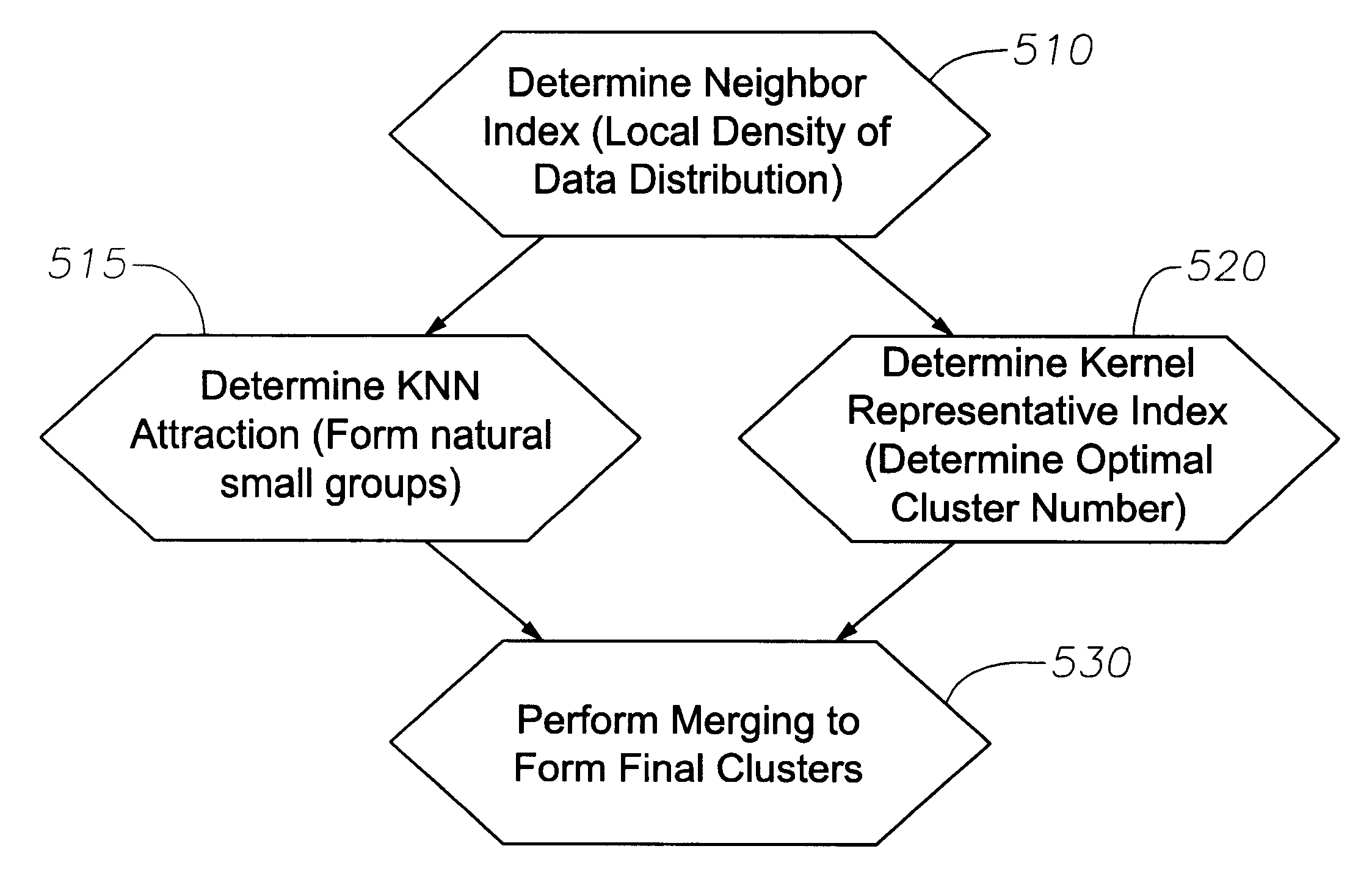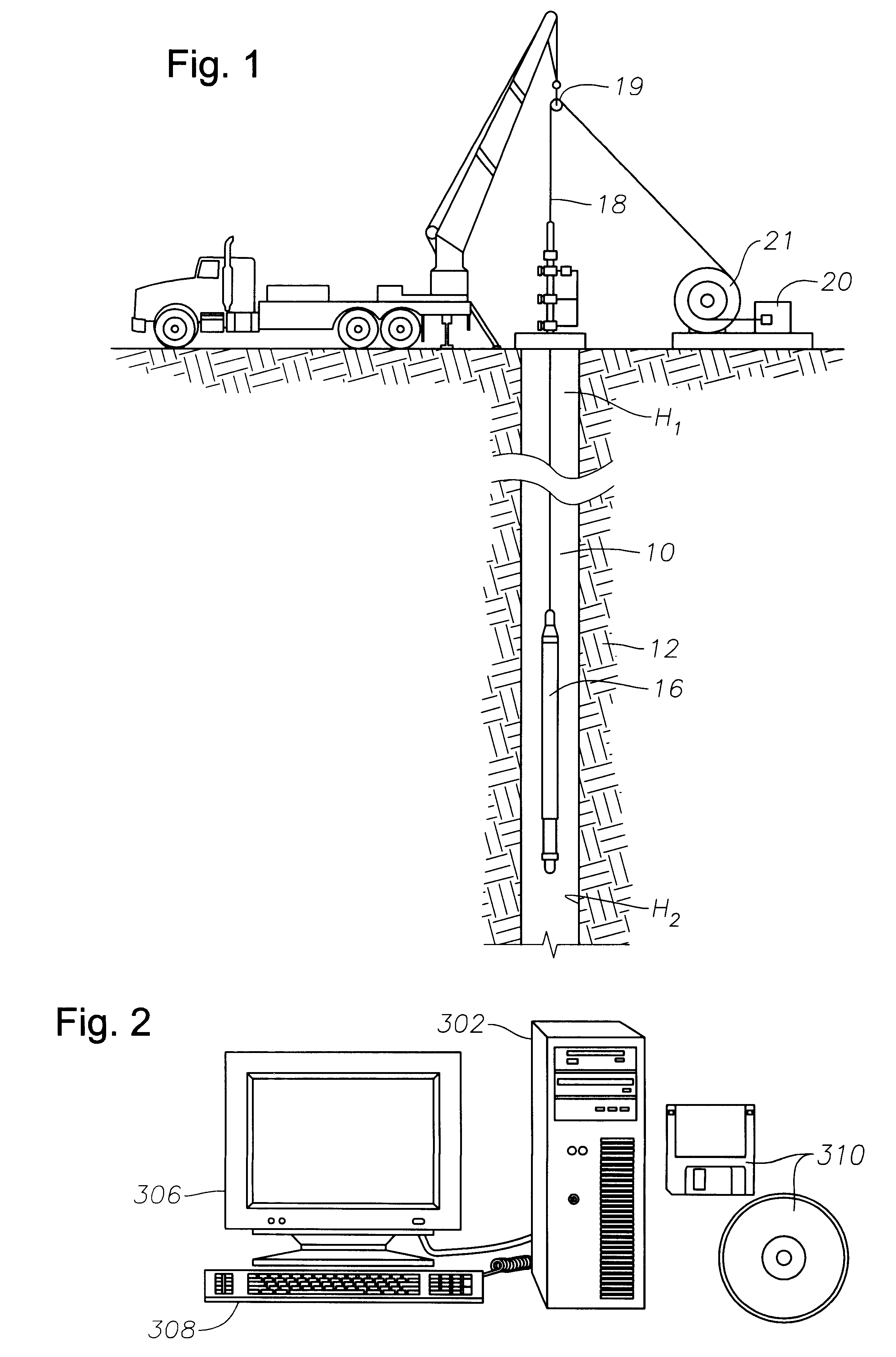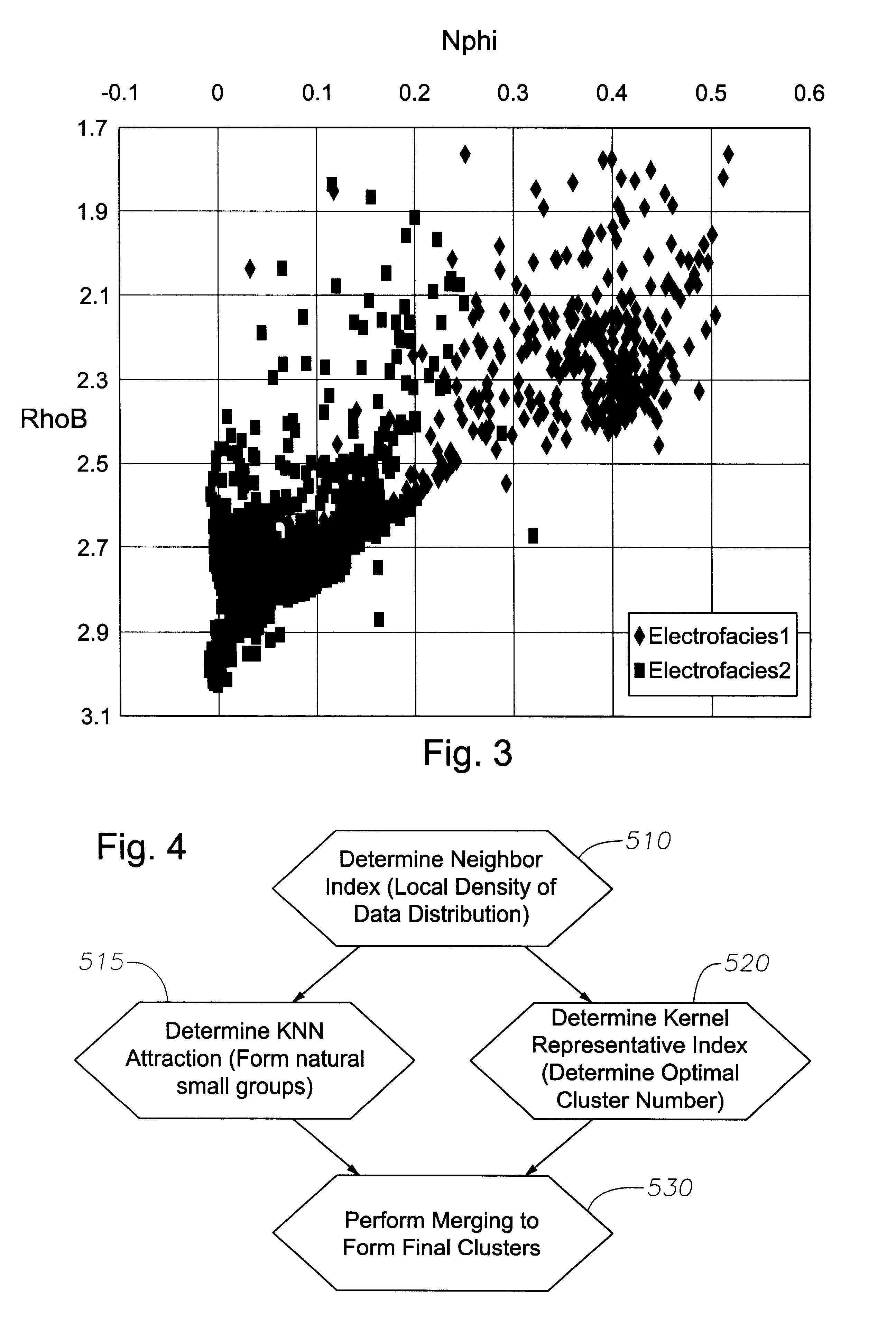Multi-resolution graph-based clustering
a graph-based clustering and multi-resolution technology, applied in the field of geological study of earth formations, can solve problems such as poor performance of existing systems which are highly automated, problem assigning, and not normally cost-effective to identify facies using these methods
- Summary
- Abstract
- Description
- Claims
- Application Information
AI Technical Summary
Problems solved by technology
Method used
Image
Examples
Embodiment Construction
FIG. 1 shows logging equipment in a bore hole 10 going through earth formations 12. The equipment includes a sonde 16 is suspended in the bore hole 10 at the end of a cable 18. Cable 18 connects sonde 16 both mechanically and electrically, by means of a pulley 19 on the surface, to a control installation 20 equipped with a winch 21 around which the cable 18 is wound. The control installation includes recording and processing equipment known in the art that make it possible to produce graphic representations called logs of the measurements obtained by the sonde 16 according to the depth of the sonde in the bore hole or well 10.
The bore hole 10 passes through a series of earth formations (not specifically shown) that is typically composed of a series of zones or "beds". The zones are identified by the rock facies they contain, e.g. clay, limestone, etc. From the geological viewpoint, each of these successive zones is characterized by a relative homogeneity that is revealed by a set of...
PUM
 Login to View More
Login to View More Abstract
Description
Claims
Application Information
 Login to View More
Login to View More - R&D
- Intellectual Property
- Life Sciences
- Materials
- Tech Scout
- Unparalleled Data Quality
- Higher Quality Content
- 60% Fewer Hallucinations
Browse by: Latest US Patents, China's latest patents, Technical Efficacy Thesaurus, Application Domain, Technology Topic, Popular Technical Reports.
© 2025 PatSnap. All rights reserved.Legal|Privacy policy|Modern Slavery Act Transparency Statement|Sitemap|About US| Contact US: help@patsnap.com



